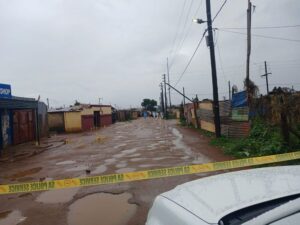
Yellowstone National Park, renowned for its geothermal wonders and breathtaking landscapes, has long been a focal point for geological research. Beneath its serene surface lies one of Earth’s most seismically active volcanic systems. In a groundbreaking study published on July 18 in Science Advances, researchers have harnessed the power of artificial intelligence to uncover previously undetected seismic activity in the Yellowstone caldera over a 15-year period.
The study, led by Western engineering professor Bing Li in collaboration with the Universidad Industrial de Santander in Colombia and the United States Geological Survey, utilized machine learning to analyze historical earthquake data. The result was a tenfold increase in the number of detected seismic events, significantly enhancing the understanding of Yellowstone’s volcanic and seismic behavior.
Unveiling the Yellowstone Caldera
The Yellowstone caldera, spanning parts of Wyoming, Idaho, and Montana, is a vast depression formed by a volcanic eruption and subsequent collapse of the land above. Unlike a typical volcanic crater, which is created by an outward explosion, a caldera results from the emptying of a magma chamber beneath the surface.
The newly expanded historical catalogue now includes 86,276 earthquakes from 2008 to 2022, offering unprecedented insights into the region’s seismic activity. A significant portion of these earthquakes were identified as part of swarms—clusters of small, interconnected tremors that occur over short periods and within confined areas.
“While Yellowstone and other volcanoes each have unique features, the hope is that these insights can be applied elsewhere,” said Li, an expert in fluid-induced earthquakes and rock mechanics.
The Role of Machine Learning
Prior to the advent of machine learning, earthquake detection relied heavily on manual inspection by seismologists, a time-consuming and costly process. The introduction of AI has revolutionized this field, enabling researchers to mine vast amounts of historical waveform data stored in data centers worldwide.
“If we had to do it old school with someone manually clicking through all this data looking for earthquakes, you couldn’t do it. It’s not scalable,” Li explained. The efficiency of AI has sparked a data-mining revolution, allowing scientists to uncover seismic patterns previously hidden from view.
Fractals and Fault Structures
The study also revealed that earthquake swarms beneath the Yellowstone caldera occur along relatively immature, rougher fault structures. This contrasts with the more mature fault structures found in regions like southern California. The researchers employed fractal-based models to characterize these swarms, suggesting they result from a combination of slowly moving underground water and sudden fluid bursts.
“To a large extent, there is no systematic understanding of how one earthquake triggers another in a swarm. We can only indirectly measure space and time between events,” Li noted.
Implications and Future Prospects
The implications of this study extend beyond Yellowstone. By improving the understanding of seismic patterns, researchers can enhance safety measures, better inform the public about potential risks, and guide geothermal energy development away from hazardous areas with promising heat flow.
This development comes as scientists worldwide continue to explore the application of AI in various fields, from climate change modeling to medical diagnostics. The success of this study underscores the potential of AI to transform our understanding of natural phenomena and improve disaster preparedness.
As researchers continue to analyze the expanded earthquake catalogue, the hope is to uncover new patterns and insights that could inform future studies and safety protocols. The integration of AI in geological research marks a significant step forward in the quest to understand Earth’s dynamic processes.







